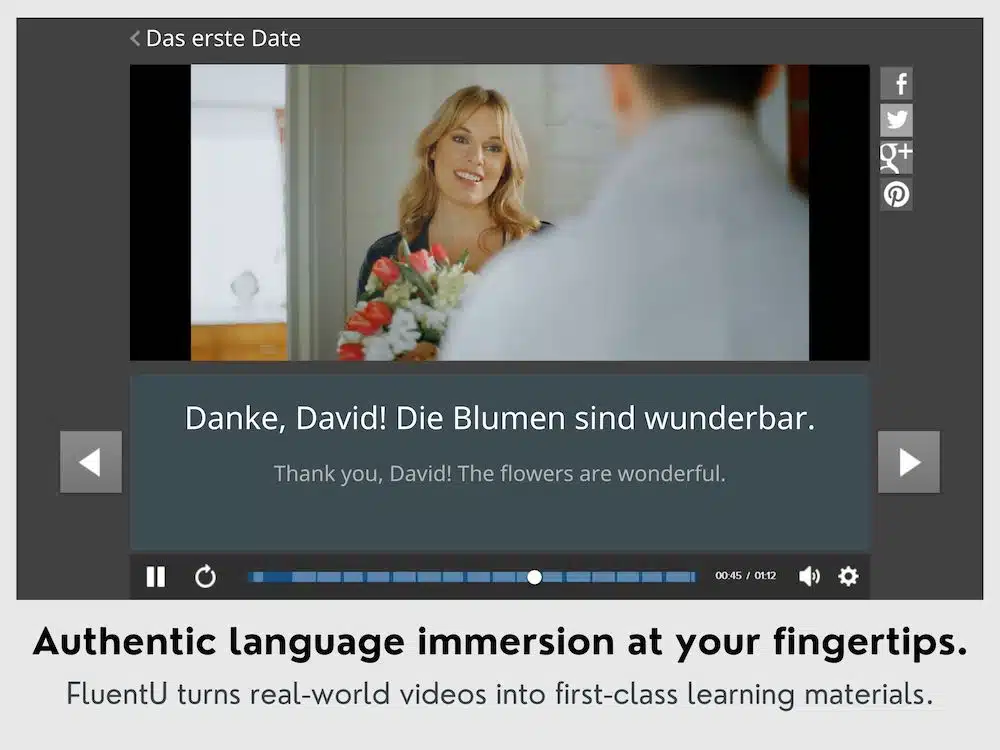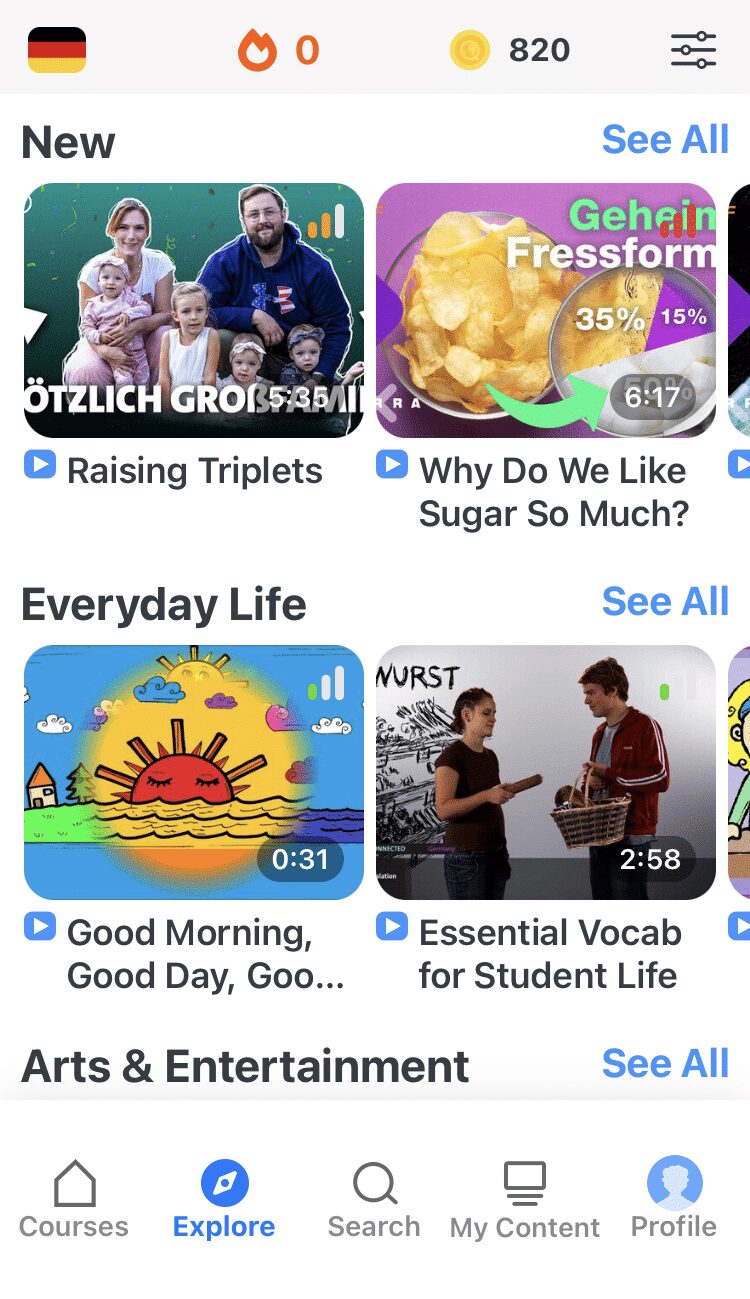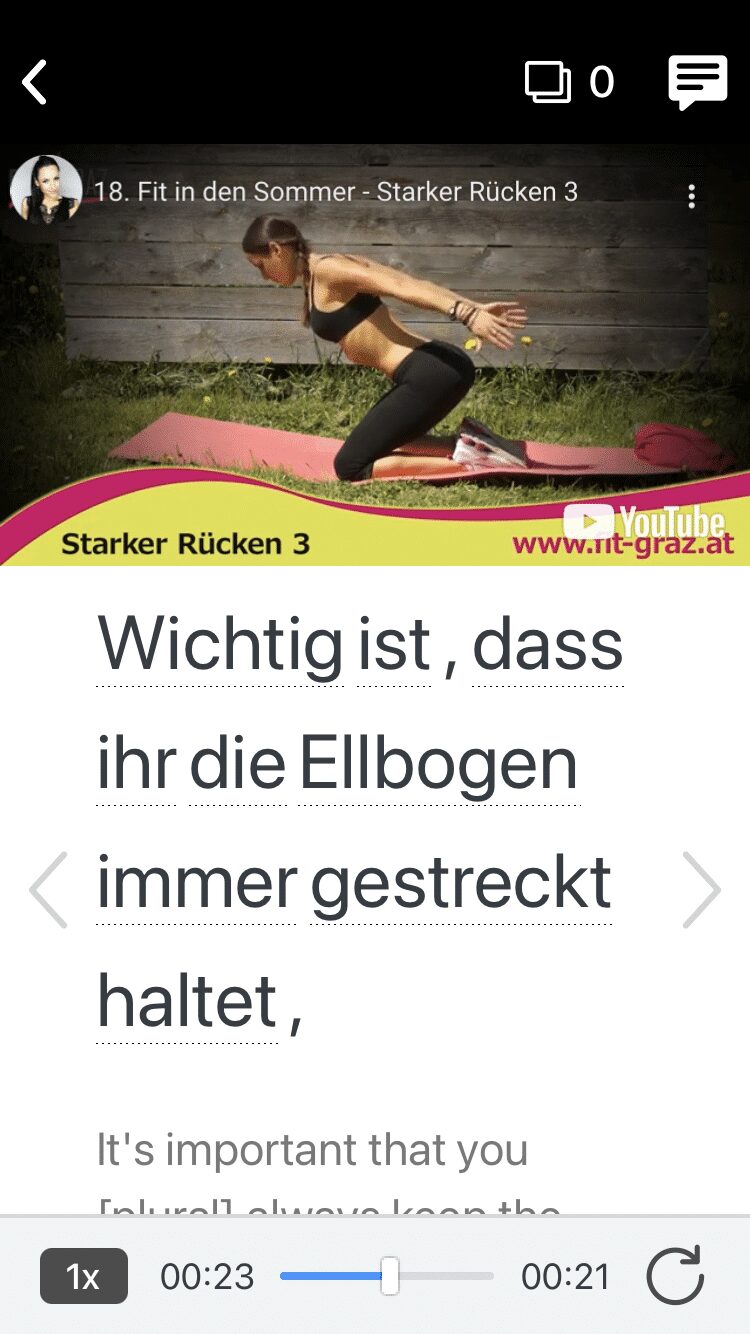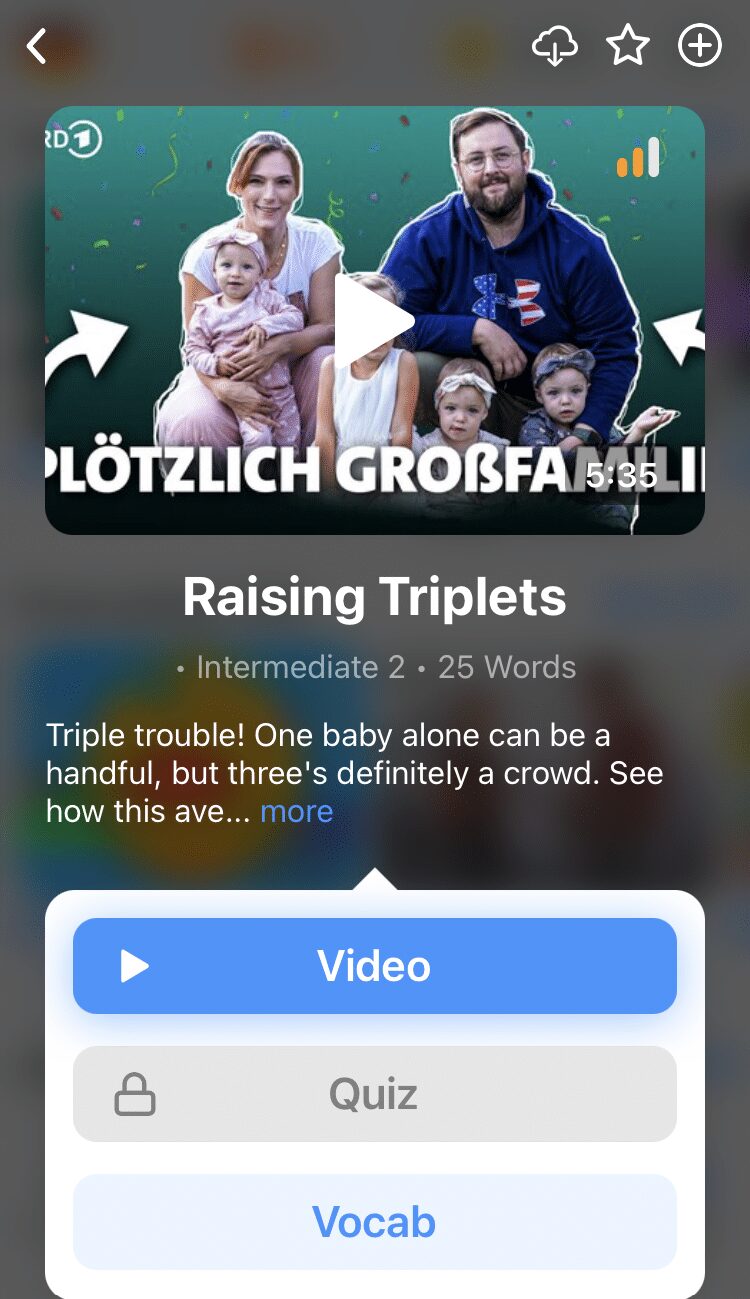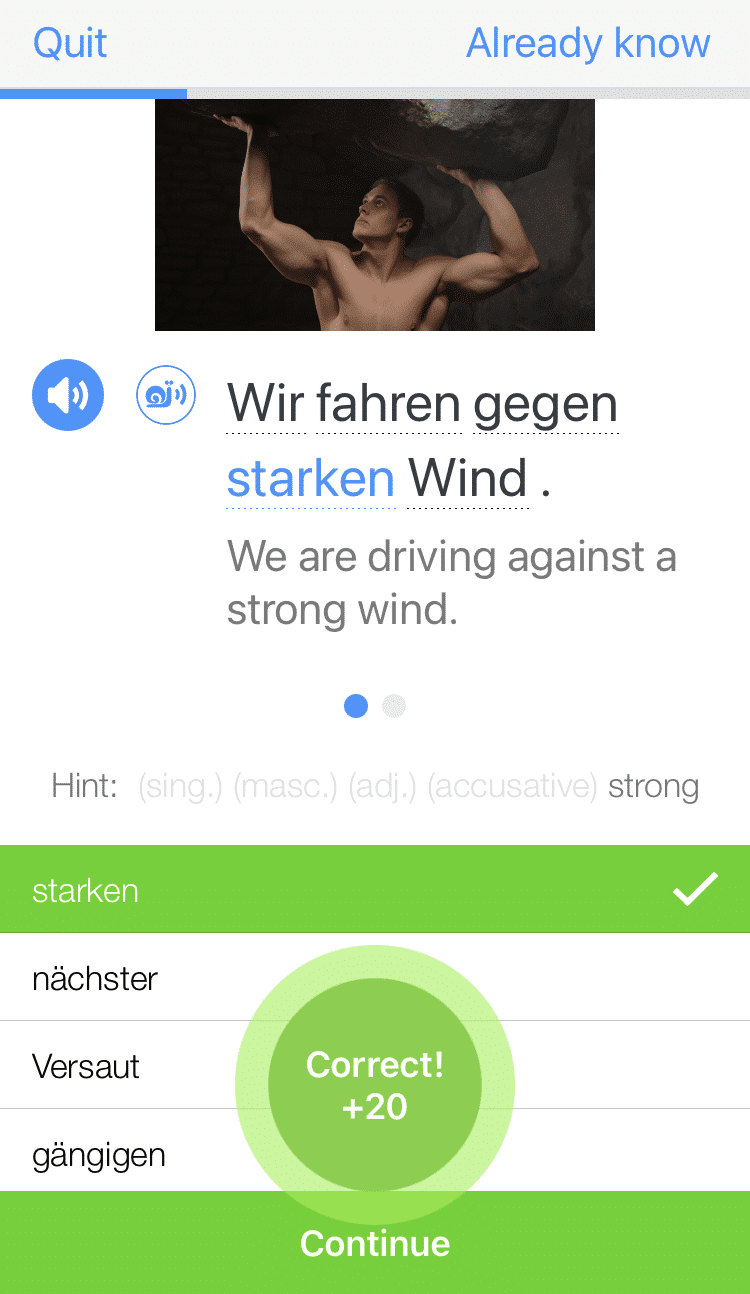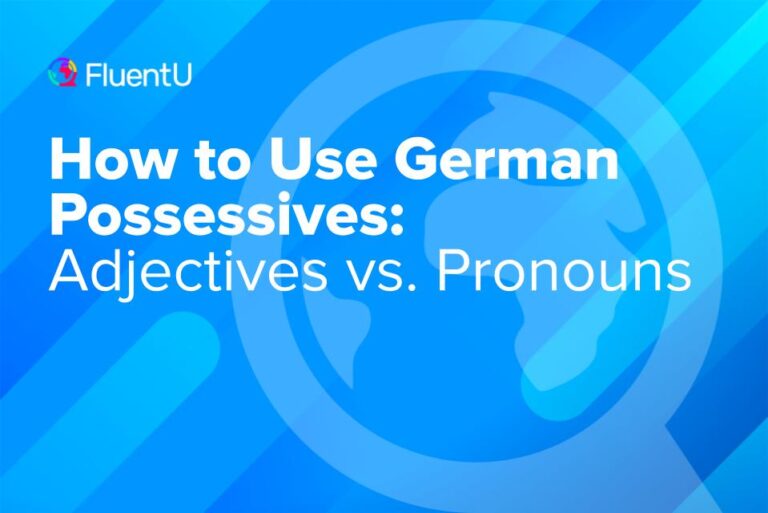The German Comparative and Superlative

Two aspects of German grammar that learners struggle with in particular are comparatives and superlatives. Below, I’ll show you some examples and definitions of these two in use.
Then, I’ll teach you how to form comparatives and superlatives in German and how to use them correctly in different contexts.
Download: This blog post is available as a convenient and portable PDF that you can take anywhere. Click here to get a copy. (Download)
What Are Comparatives and Superlatives?
Comparatives are used when comparing two things, people, actions, characteristics or qualities that are seemingly different.
Superlatives are used when you want to make a claim that something, relative to all others, has the most or least of a given characteristic.
By contrast, if you want to compare a shared characteristic of two things and you think the two characteristics are equal, there’s no need for a comparative or superlative adjective.
You would instead use a positive adjective, or an adjective in its most simple form, and put it in between so (as) and wie (as/like).
Ich bin so schnell wie du. (I am as fast as you.)
Before jumping into how comparatives and superlatives work in German, it can be helpful to look at the building blocks of English.
When we compare or judge the qualities of a thing or action, we use either adjectives or adverbs. You probably recall that adjectives describe people, places or things, and adverbs describe actions.
| Adjective | He is slow. |
| Adverb | He walks slowly. |
German also uses adjectives and adverbs to make comparisons, which is going to make this really easy for native English speakers. For example, check out how similar the following English and German structures are:
| Positive Adjective | Ich bin groß. | I am tall. |
| Comparative Adjective | Ich bin größer. | I am taller. |
| Superlative Adjective | Ich bin am größten. | I am tallest. |
How to Form Comparatives and Superlatives in German
The Basic Formula
If you noticed, the formation of comparative and superlative adjectives and adverbs in both English and German is formulaic. Consider the English -er and -est suffixes. That’s a pretty good indication that you’re working with comparatives and superlatives, respectively.
German also has a formula and it’s similar to English.
In German, comparatives are often formed by adding -er to the end of an adjective or adverb (just like in English). Superlatives are formed by appending -sten or -esten to the end of an adjective or adverb. In certain cases, the word am precedes the superlative—more on that later in the post.
Check out the following examples:
| einfach (easy) | einfacher (easier) | am einfachsten (the easiest) |
| laut (loud) | lauter (louder) | am lautesten (the loudest) |
Exceptions to the Formula
You might be thinking “it can’t be that easy,” and of course, you’re right. As you’ll often find, there are exceptions to the formula above.
In German, those exceptions are often found when you’re using a monosyllabic adjective. In some of those cases, you need to toss an umlaut in there, too, right over the verb.
| groß (big) | größer (bigger) | am größten (the biggest) |
| alt (old) | älter (older) | am ältesten (the oldest) |
| jung (young) | jünger (younger) | am jüngsten (the youngest) |
Then there are the words that just play by their own rules—irregular comparatives and superlatives that you can simply memorize. Here are some of the most common:
| viel (much) | mehr (more) | am meisten (the most) |
| gut (good) | besser (better) | am besten (the best) |
| gern (like/with pleasure) | lieber (love to/prefer to) | am liebsten (the favorite/with the most pleasure) |
| hoch (tall) | höher (taller) | am höchsten (the tallest) |
Also, it’s worth noting that unlike in English, in German you can’t just add “more” or “most” in front of a positive adjective to turn it into a comparative or superlative form.
In German those words are mehr and meist but you can forget that for the time being because we won’t be using those words here.
How to Use Comparatives and Superlatives in Context
Assess the Gender and Case
As you might already know, German adjectives can change their form depending on the gender and case of the noun they’re modifying.
If you need an in-depth overview, check out this article on how to always get German adjective endings right. For our purposes, the following quick points will suffice:
Indefinite Articles (Strong Endings)
| Nominative | Accusative | |
| Masculine | -r or -er | -n or -en |
| Feminine | -e | -e |
| Neuter | -s or -es | -s or -es |
| Plural | -e | -e |
Definite Articles (Weak Endings)
| Nominative | Accusative | |
| Masculine | -e | -en |
| Feminine | -e | -e |
| Neuter | -e | -e |
| Plural | -en | -en |
Watch out for situations where you need to rely on context to determine whether it’s a comparative or a positive adjective, as in the following:
mein schneller Freund (my fast friend)
In the case above, schneller (faster) has that -er on the end simply because Freund (friend) is masculine. In this case, it’s not comparative. It’s just descriptive. You’re talking about your fast friend.
mein Freund ist schneller (my faster friend)
Yes, unfortunately, you read that right. The positive and comparative forms for schnell (fast), when you’re talking about a masculine object, look the same. In this case, schneller (faster) has that -er on the end again, but this time for a different reason. In this case, it’s because we’re using the comparative form.
As with most German-language concepts, one of the best ways to learn is to hear how the language is used by real native German speakers. You can practice comparatives and superlatives in context with an immersive study tool like FluentU.
FluentU takes authentic videos—like music videos, movie trailers, news and inspiring talks—and turns them into personalized language learning lessons.
You can try FluentU for free for 2 weeks. Check out the website or download the iOS app or Android app.
P.S. Click here to take advantage of our current sale! (Expires at the end of this month.)
Use Als for Comparative Sentence Building
When we compare two things in English, we use “than.” In German, instead of “than,” we use als (as).
Remember the above example in English:
I am faster than you.
We’ve taken the adjective “fast” and added an -er on the end of it to make it comparative. Then we had to change the structure of the sentence by adding the word “than” after it. In German, you add an -er after the adjective and you add the word als (as) after it.
Ich bin schneller als du. (I am faster than you.)
Use Am or an Article for Superlative Sentence Building
Let’s take a moment to discuss what this am thing is I keep throwing in here when I use superlatives. Technically, it’s a shortened form of an dem (at the).
We use it when we have a superlative that’s not sandwiched between an article and a noun, like in the example from earlier:
Ich bin am schnellsten. (I am the fastest.)
When you’re using superlatives that are sandwiched between an article and a noun, you treat the superlative slightly differently. You still begin the same way, by adding the correct suffix.
Instead of including the word am before it, you include an article ( der die das ) before it and you change the ending to reflect the correct case, in accordance with the gender rules. The noun in question then becomes what we call an adjectival noun, which basically is where an adjective dresses up as a noun temporarily.
In case you need a couple more examples to clarify when you use am and when you modify the superlative adjective ending based on the gender and case, check out the following.
| Feminine | Meine Frau ist die Schönste. (My wife is the most beautiful.) | Meine Frau ist am schönsten. (My wife is most beautiful.) |
| Masculine | Ich bin der Jüngstester Bruder. (I am the youngest brother.) | Ich bin am jüngsten. (I am the youngest.) |
Look Out for the Nominative vs. Accusative Case
Remember in German that we sometimes have to change the case of nouns. That means we have to keep in mind that articles and pronouns can change.
Most of the time you’ll be using comparatives or superlatives in the nominative case, but be aware that the accusative can also be used.
| Nominative | Ich bin größer als du. (I am taller than you.) |
| Accusative | Mama mag mich besser als dich. (Mom likes me better than you.) |
| Accusative | Ich habe die schönsten Blumen gekauft. (I bought the prettiest flowers.) |
In the first example, the adjective compares two things (“I” and “you”) in the nominative. No one is doing something to someone or something else.
In the second example, you’ll notice that the accusative works just the same as it normally does, changing ich (I) to mich and du (you) to dich. Just remember to put that als in there.
In the third example, the flowers are being acted upon by me, therefore they go in the plural, accusative case with a weak ending due to the definite article, which means the adjective will end in -en.
More Resources for Comparatives and Superlatives
Want to find out where your knowledge on this topic stands, or practice the rules as you run through this post? Check out online quizzes like this one at Lingolia. The University of Michigan has also collected a series of short comparative and superlative online practice exercises to try.
Irregular forms generally require straight memorization. You can mix things up a bit and also drill yourself with a mobile flashcard app, such as Brainscape. Test yourself while you’re waiting for a bus or standing in line at the supermarket.
Some of us benefit most from working alongside someone else, though, so check out German language schools in your area. You might post a flyer and see if you can form a study group or a language exchange with like-minded students.
If all this seems a bit overwhelming, don’t worry.
It’s just a few rules that you’ll learn with use and over time, you’ll find that when the rules aren’t applied correctly, it just won’t “sound right” to you anymore.
To get to that point, take advantage of as many opportunities as you can to practice.
Work on German comparatives and superlatives as often as possible, with other German language learners or even by yourself with some apps and online resources.
Download: This blog post is available as a convenient and portable PDF that you can take anywhere. Click here to get a copy. (Download)
And One More Thing...
Want to know the key to learning German effectively?
It's using the right content and tools, like FluentU has to offer! Browse hundreds of videos, take endless quizzes and master the German language faster than you've ever imagine!
Watching a fun video, but having trouble understanding it? FluentU brings native videos within reach with interactive subtitles.
You can tap on any word to look it up instantly. Every definition has examples that have been written to help you understand how the word is used. If you see an interesting word you don't know, you can add it to a vocabulary list.
And FluentU isn't just for watching videos. It's a complete platform for learning. It's designed to effectively teach you all the vocabulary from any video. Swipe left or right to see more examples of the word you're on.
The best part is that FluentU keeps track of the vocabulary that you're learning, and gives you extra practice with difficult words. It'll even remind you when it’s time to review what you’ve learned.
Start using the FluentU website on your computer or tablet or, better yet, download the FluentU app from the iTunes or Google Play store. Click here to take advantage of our current sale! (Expires at the end of this month.)
